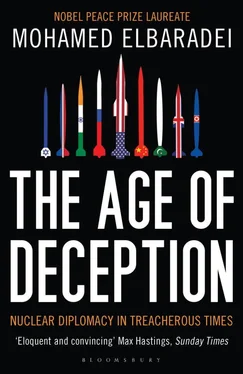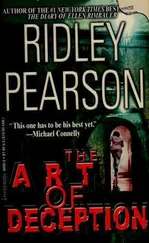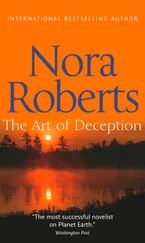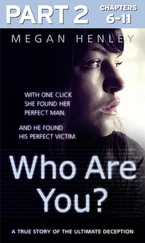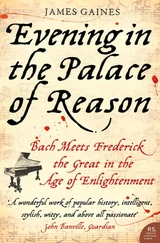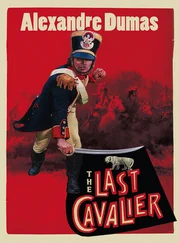I answered him bluntly, shifting into Arabic so he could not mistake my tone or meaning. “We are here to help you,” I said, “but frankly only if you are willing to help yourselves. You need to show cooperation, and you need to show transparency, because these issues are not going to be resolved if you are not proactive.” I mentioned the way that some of the Iraqi administration had repeatedly attacked the UN inspectors as undercover agents. “Just to label UN inspectors as spies,” I told him, “is not in any way helping your case.”
To my surprise, Ramadan began to cool down. I believe he grasped the essence of what I was saying: first, that our role, and that of our inspectors, was not driven by a personal vendetta, but by the responsibility for carrying out an international mandate; and second, that cooperation on their part was the only way out of the mess they were in. [6] Ramadan was later placed on the U.S. list of most-wanted Iraqis. He was captured in August 2003 and executed in March 2007.
This remained my stance throughout the process, although my nationality and heritage created expectations of a different kind of posture. Early on, I often got the feeling that the Arab world—and many Westerners—expected me, as an Egyptian Arab and a Muslim, to show bias in favor of Iraq. Of course, I also heard that I was being tough on Iraq to prove my lack of bias. My only bias was that of an international civil servant: an insistence on independence, professionalism, and treating all parties with equal respect. The Iraqis soon learned that I was not going to perform any special favors for them, nor was I biased against them. Although I ultimately received grudging acknowledgment of my objectivity from most quarters, my name and ethnicity were nonetheless used repeatedly as a means of insinuating that I was prejudiced in my judgments.
And worse. My staunch impartiality might have been the prompt for a number of curious encounters. On our first visit to Baghdad after the resumption of inspections, in November 2002, a man called me at the hotel, on my room phone. He told me he was a lawyer and said he wanted to leave the country. He wanted to know whether Blix or I could help him. I told him that this was not our business, that we were there to focus on the inspections. He thanked me and hung up.
On my next visit, the phone rang again. This time it was a woman. She said she was a Kurd working with the United Nations in Kurdistan and claimed she had a problem with her contract. “I’m sitting down by the hotel pool now,” she said. “I think you could help me if I could explain more. Could you meet me?” I told her that I could not see her, but that she could write to me. Not surprisingly, I never heard from her again.
On still another occasion, I was approached by Foreign Minister Sabri himself. He drew me aside to ask whether I had family or friends who might be interested in commercial transactions in the Iraqi oil sector. If so, he said, I should let him know. The offer was later repeated to me by Iraq’s ambassador in New York, who said he was asking on behalf of the foreign minister. I made clear I wanted nothing to do with such an “opportunity.”
I believe these cases were setups, instigated by the Iraqi government, perhaps intended to try to blackmail or “gently persuade” me. Nobody else would have dared call me at the hotel; any local would have presumed, with good reason, that the rooms and the telephones were bugged.
Over the first two months of inspections, the IAEA made solid progress reestablishing its understanding of Iraq’s nuclear capabilities. The bulk of our inspections were at state-run or private industrial facilities, research centers, and universities—focusing on locations where we knew Iraq had maintained significant technical capabilities in the past, or on new locations suggested by the analysis of open-source information, or on facilities that were identified through satellite imagery as having been modified or constructed since 1998. The inspections were carried out without prior notification to Iraq.
Agency inspectors also combed the country in more general ways, using a variety of tools. Tracking the environmental “signature” of radioactive materials, we resumed monitoring Iraq’s rivers, canals, and lakes to detect the presence of key radioisotopes. We collected samples from locations across Iraq, which were taken to IAEA laboratories for analysis. We conducted extensive radiation surveys using sensitive car-borne and handheld instruments, scanning industrial sites and additional areas for nuclear and other radioactive material. We interviewed many Iraqi scientists, managers, and technicians—primarily in their places of work during unannounced inspections—to glean any information about past and present programs.
In parallel with these on-site inspections, analysts at IAEA headquarters in Vienna were poring over new information submitted by Iraq, comparing it to the records we had accumulated between 1991 and 1998 and further data we had compiled through remote monitoring during our four years of absence from the country. The Iraqi declaration was consistent with our existing understanding of Iraq’s pre-1991 nuclear program, but we continued to seek clarification where there were gaps.
After 139 inspections of 106 locations over those first sixty days, we had uncovered no evidence of efforts on the part of Iraq or its scientists to revive the country’s nuclear weapons program. The inspections continued unabated. But two specific technical issues dominated the nuclear debate with the aim of accelerating the march to war: Iraq’s attempts to procure high-strength aluminum tubes from abroad and the alleged purchase of uranium from Niger.
The aluminum tubes were cited on numerous occasions by Western officials as irrefutable proof of Iraq’s renewed nuclear ambitions. As evidence, the officials referred to the June 2001 seizure, in Jordan, of a shipment of tubes bound for Iraq. Shortly before the readmission of inspectors to Iraq, Condoleezza Rice, for example, had gone on CNN to declare that these tubes were “only really suited for nuclear weapons programs.” [7] September 8, 2002. This was the same appearance in which Rice, with a first-rate bit of melodrama, coined the phrase “We don’t want the smoking gun to be a mushroom cloud.”
Rice’s statement was misleading: experts at the U.S. Department of Energy had long been on record saying they believed these tubes were best suited for artillery rockets.
Our inspectors made it a high priority to visit the Nasser metal fabrication facility, where we knew Iraq made conventional artillery rockets of similar dimensions. The Iraqi engineers there showed the inspectors thousands of completed rockets, fabricated from tubes of precisely the same aluminum alloy and with the same tolerances as those of the tubes intercepted in Jordan. The engineers gave a simple reason for their procurement attempts: they were short on supplies. As for why they had sought those particular specifications, their reasons were equally straightforward: they wanted accurate rockets, they wanted to minimize design changes, and they wanted the tubes to be anodized to keep them from rusting.
Nowhere did we find evidence of a revived centrifuge enrichment program. On January 27, 2003, when I made an interim report to the Security Council, I gave our conclusion regarding these tubes: “From our analysis to date, it appears that the aluminum tubes would be consistent with the purpose stated by Iraq and, unless modified, would not be suitable for manufacturing centrifuges.”
The U.S. response—or lack of one—was remarkable. President Bush delivered his State of the Union address the next day. In one of the most watched speeches of the year, he again claimed that Iraq was trying to purchase aluminum tubes “suitable for nuclear weapons production.” There was no mention of the IAEA’s contradictory conclusion based on direct verification of the facts in Iraq. Nor did Bush note the differing analysis of the U.S. Department of Energy.
Читать дальше
